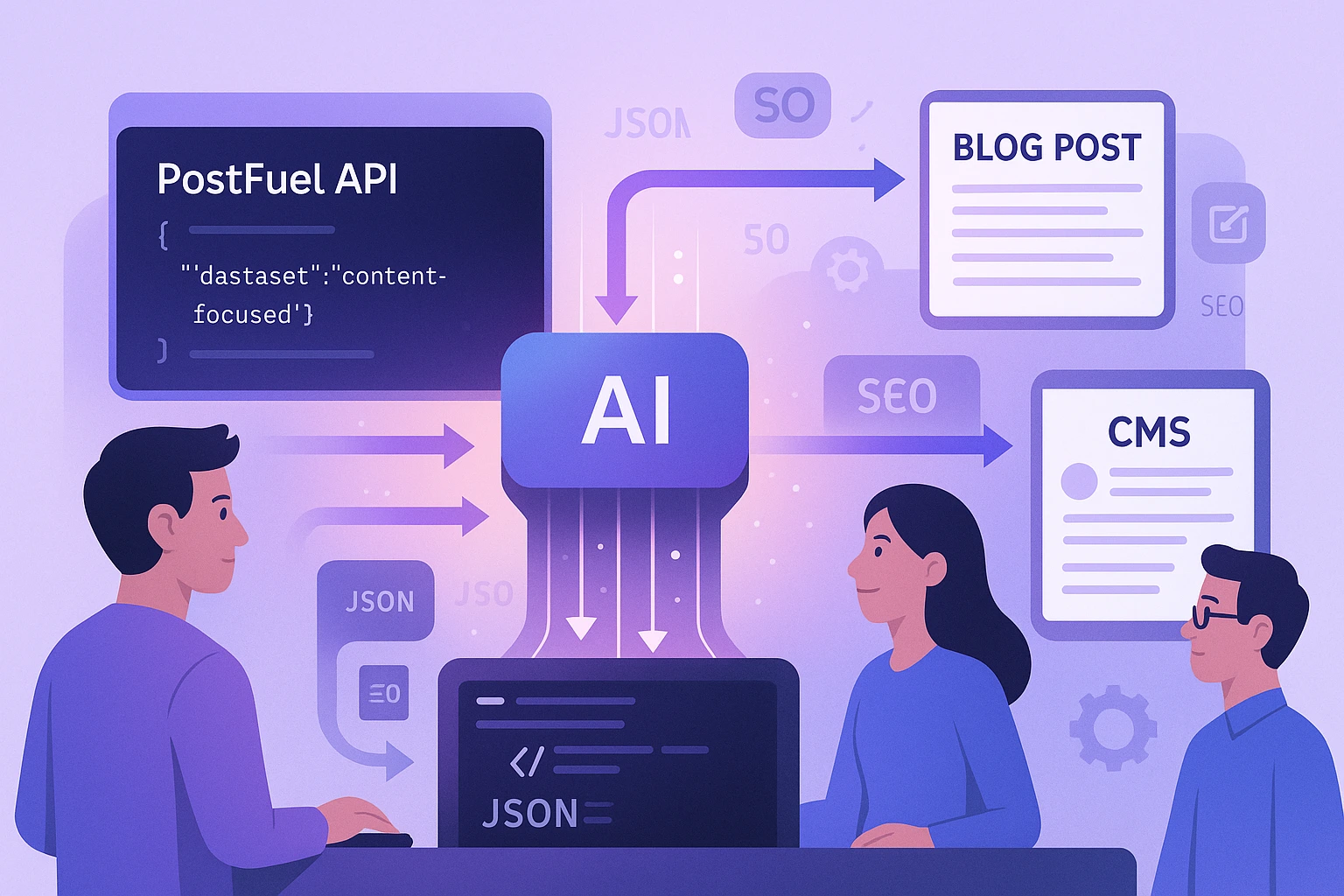
Leveraging API Integration for Seamless, Automated Content Workflows
In the rapidly evolving digital landscape, businesses face immense pressure to deliver fresh, relevant, and SEO-optimized content at scale. Manual content creation is no longer sufficient to keep pace with changing algorithms, shifting customer expectations, and the need for consistent brand messaging. This is where API integration becomes indispensable, especially when combined with advanced AI content automation platforms like PostFuel. By harnessing the power of APIs, organizations can transform their content workflows, drive efficiency, and achieve measurable improvements in SEO and engagement.
Understanding API Integration in Content Automation
An Application Programming Interface (API) acts as a bridge between different software systems, allowing them to communicate and share functionality seamlessly. In the context of content automation, integrating with a content creation API means businesses can generate, customize, and deploy content programmatically—bypassing the repetitive manual steps that traditionally slow down content teams.
According to one source, “APIs are the building blocks of modern software development,” enabling businesses to connect with new tools and platforms quickly, improve integration speed, and enhance overall productivity. For content strategists and marketers, this translates to more time spent on high-level planning and less on manual, repetitive tasks.
The Benefits of API-Driven Content Workflows
- Scalability and Speed: Content generator APIs empower organizations to produce content on demand, at any volume, without bottlenecks. Whether it’s blog articles, product descriptions, or social media updates, automated workflows mean content can be generated and published in seconds, accelerating campaigns and allowing rapid response to market trends.
- SEO Optimization: API integration streamlines the process of incorporating targeted keywords, optimizing structure, and maintaining best SEO practices. AI-powered platforms can analyze your business profile and automatically generate SEO-ready content, dramatically improving search visibility and attracting the right audience.
- Consistency and Quality Control: Automated content workflows ensure that every piece of content adheres to brand guidelines, tone, and style. APIs can be programmed to enforce quality standards and conduct automated checks, safeguarding the reputation and coherence of your brand messaging.
- Customization and Personalization: Advanced APIs allow users to specify content parameters such as topic, format, tone, and even language. This flexibility means businesses can tailor content for different audience segments, platforms, and markets without additional manual effort.
- Cost and Resource Efficiency: By automating repetitive aspects of content creation, organizations reduce reliance on manual labor and external agencies. This not only cuts costs but also reallocates valuable resources to strategic initiatives that drive growth.
Implementing API Integration: Best Practices for Success
To fully realize the potential of API-driven content automation, businesses should adopt a structured approach:
- Define Clear Objectives: Identify which content tasks can be automated and set measurable goals—be it faster content turnaround, higher SEO rankings, or improved user engagement.
- Establish Robust Guidelines: Develop content policies covering tone, style, and compliance to ensure that all automated outputs align with brand values and regulatory requirements.
- Monitor and Optimize: Regularly review automated content for quality, accuracy, and performance. Implement feedback loops to continually refine outputs and respond to emerging needs.
- Prioritize Security and Compliance: APIs should be integrated with security protocols to protect sensitive data and ensure ethical content generation. As one source highlighted, “APIs act as gatekeepers, meticulously regulating who or what can access specific data or functionalities.”
Realizing the Strategic Value of API-Powered Content Platforms
Platforms like PostFuel exemplify the dual benefits of intuitive no-code web applications for non-technical users and robust content creation APIs for developers. Marketers and strategists can quickly deploy automated content strategies, while technical teams can integrate scalable content workflows directly into their existing systems. This synergy not only eliminates manual bottlenecks but also ensures a continuous stream of fresh, relevant, and search-optimized content across all digital channels.
As content marketing grows increasingly data-driven and competitive, leveraging API integration for AI content automation is no longer optional—it’s a strategic imperative. Businesses that embrace these tools position themselves to achieve greater efficiency, stronger brand consistency, and superior SEO outcomes, all while freeing up resources for innovation and growth.
Conclusion
API integration is revolutionizing the way businesses approach content creation and strategy. By combining the speed, scalability, and intelligence of AI-powered content platforms with the seamless connectivity of APIs, organizations can unlock new opportunities for engagement, brand growth, and operational excellence. Adopting automated content workflows not only addresses today’s content demands but also future-proofs your digital strategy for the evolving needs of tomorrow.
Ready to accelerate your application's content features?
Explore the PostFuel API documentation and see how easy it is to integrate powerful, scalable content generation.
https://postfuel.dev/docs#